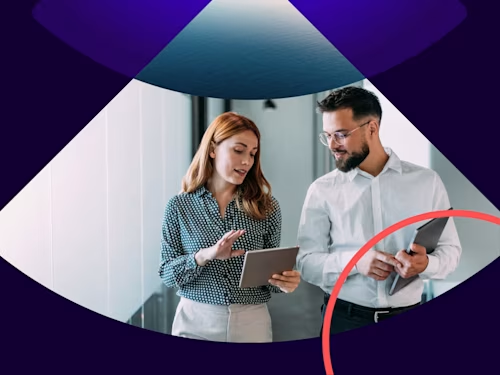
How to write an invoice - Docusign
Need help writing an invoice? Learn the best practices for writing an invoice with our step-by-step guide with examples and detailed tutorials.

Every organisation needs to invoice their customers to get paid for their services. A smooth invoice process is fundamental to ensuring your cash flow remains healthy. Read on to discover our step-by-step guide on how to write an invoice and what needs to be included. For each invoice, you need to fill in customer information, assign terms and due dates and display how much is owed. You can also create an invoice template for repeated invoices. We will delve into the various aspects of creating an effective invoice, covering what an invoice is, what information it must include, how to design an invoice template, best practices for efficient invoicing, common mistakes to avoid, and the legal implications of an invoice.
Find out more about creating an invoice template with Docusign eSignature.
What is an invoice?
An invoice is a document that represents a formal request for payment from a customer to a business. It itemises and records transactions between a company and a customer and seeks payment.
In the UK, you must provide an invoice by law if your business and the customer you are dealing with are registered for VAT.
What must be included in an invoice?
An effective invoice contains several key components that ensure transparency and clarity in the payment process. These elements include:
Client Information: The recipient's name, contact details, and billing address.
Business Information: The seller's name, business name, contact information, and trading address.
Invoice Number: A sequential number to differentiate this invoice from others.
Invoice Date: The date when the invoice was issued.
Products or Services Quantity and Description: A detailed and crystal clear list of the products or services provided, along with their respective quantities and prices.
Total Amount Due: The grand total of the transaction, including any taxes or fees.
Net Payment Terms: The agreed-upon terms for the payment, such as the due date and any discounts for early payment.
Payment Details: Make it really easy for your customer to pay you by using your payment details, and for digital invoices, include a button or link that directs the recipient to the payment platform.
Payment Due Date: The deadline by which the payment must be made. For UK limited companies or LLPs, you need to show your Companies House registered number and address.
VAT Details: If you are VAT registered, you must also include your company VAT registration number, the time of supply or tax point if different from the invoice date and the total amount of VAT charges in sterling. If you sell a good or service with zero-rated VAT, you should clarify this on the invoice. (Ask your accountant for advice on VAT invoices.)
Additional Notes: You may want to include a section for additional notes or a message to your customer.
What are the common mistakes when it comes to invoicing?
If you regularly create invoices from scratch, it’s easy to make an error. Here are some common mistakes to watch out for.
Delay in sending invoice: If you forget to send your invoice or delay sending it can cause a delay in your payment and cash flow issues.
Customer Information: Incorrect or missing recipient details can lead to payment delays.
Missing Purchase Order Number: Some customers require you to add their purchase order number to your invoice to get paid on time and without error.
VAT and Tax Errors: Misunderstanding your tax regulations can result in inaccurate tax calculations.
Payment Details: Providing incomplete or unclear payment instructions can prevent a timely payment.
Invoice Description: Vague, incomplete or incorrect descriptions of products or services can lead to confusion for accounts teams.
Invoice Numbering: Use sequential numbers ideally. Skipping or duplicating invoice numbers can cause tracking and record-keeping issues.
What are the best practices for saving time while invoicing?
Establish a transparent invoicing process in your organisation - create a clear workflow for reviewing and sending invoices promptly.
Create an easy-to-use template with all the required data fields that can be adjusted for each invoice.
Consider integrating your invoice process with your sales system to generate invoices seamlessly.
Is an invoice a legal document?
If the business issuing the invoices is registered for VAT, the invoices must comply with certain requirements as laid down by HMRC. An invoice is a legal document, and as such, if an incorrect invoice is issued, it should either be cancelled with a credit note and a new, correct invoice issued, or a credit note should be issued to correct the invoice.
Creating an invoice template
It’s common practice for an organisation to set up an invoice template for each customer that can be re-used. Requesting the customer’s signature on an invoice is not required. Still, signing an invoice is a common practice, ensuring that all parties understand that the customer acknowledges and agrees with the information on the invoice. Setting up a digital invoice template can make sending invoices faster, and electronic signatures can make the signing process easier. A digital document automation system can create and distribute invoices automatically.
Digital invoices created from a template have many advantages, such as reduced errors, automated creation and faster time to payment. You can create a template using a system such as Docusign eSignature. Docusign offers solutions for finance departments looking to accelerate invoice payments.
Whether you are creating and sending hundreds of invoices a month or just a few each year, Docusign has a solution to make invoicing easier. To get started with creating digital invoices, sign up for a Docusign free trial.

Related posts
Docusign IAM is the agreement platform your business needs



